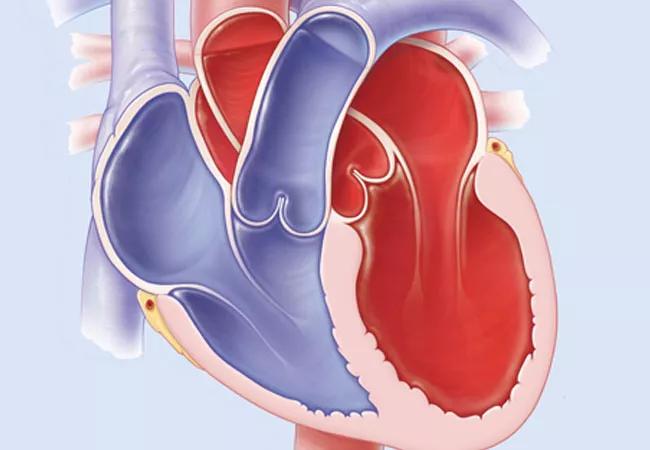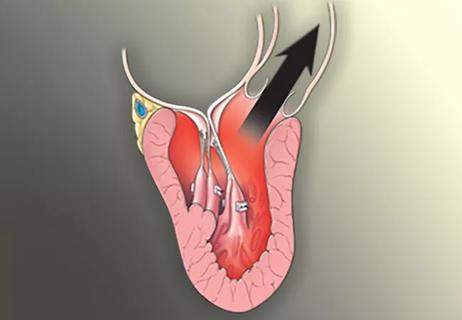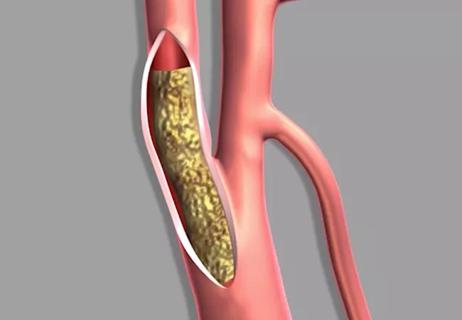Both LVEF and global longitudinal strain add prognostic value, study shows

Exclusive reliance on left ventricular ejection fraction (LVEF) as the sole marker of cardiac functional improvement appears to not be the best prognostic strategy in patients with Takotsubo syndrome, according to a large observational study from Cleveland Clinic. The study, published online by the Journal of the American Heart Association, suggests that more-sensitive markers, such as LV global longitudinal strain, are needed for optimal risk stratification.
Advertisement
Cleveland Clinic is a non-profit academic medical center. Advertising on our site helps support our mission. We do not endorse non-Cleveland Clinic products or services. Policy
The analysis also found that the trigger of Takotsubo syndrome can be predictive of mortality and that baseline LVEF and LV global longitudinal strain offer independent and incremental long-term prognostic value beyond standard clinical factors.
“Our group has previously shown in various other cardiovascular diseases that LVEF and LV global longitudinal strain provide a more sensitive noninvasive means to assess LV function and provide additive prognostic insight,” says senior and corresponding author Milind Desai, MD, Director of Clinical Operations in Cleveland Clinic’s Department of Cardiovascular Medicine. “We hypothesized this might be true in Takotsubo syndrome as well, and explored whether there are clinically relevant cutoffs of LVEF and LV global longitudinal strain for predicting future events.”
He and colleagues studied 650 patients who presented to Cleveland Clinic from 2006 to 2018 with acute chest pain syndrome and were diagnosed with Takotsubo syndrome based on clinical, echocardiographic and angiographic evaluation. The primary outcome measure was all-cause mortality, and multivariate Cox proportional hazard analysis was performed to assess the association of various predictors with this and other clinical outcomes.
Patients were categorized by documented Takotsubo syndrome triggers, as follows: 41% had physical triggers (related to trauma, surgery or a medical diagnosis [e.g., cancer]), 16% had emotional triggers, 10% had neurologic triggers and 34% had an indeterminate trigger.
Advertisement
Across the cohort, mean baseline LVEF was 36% ± 10% and mean baseline LV global longitudinal strain (LV-GLS) was –11.6% ± 0.4% (LV-GLS values are negative, with lower absolute numbers being worse than higher numbers). Notably, 94% of patients had LVEF below 52%, and 80% had apical ballooning. No patients had obstructive coronary artery disease.
Over median follow-up of 2.2 years, 175 patients (27%) died, with in-hospital death occurring in 9% of the cohort.
Multivariate survival analysis showed the following factors to be significantly associated with mortality:
At the same time, treatment with aspirin (HR = 0.70) and beta-blockers (HR = 0.73) was found to improve survival.
When the investigators added LVEF and LV-GLS to traditional clinical markers — i.e., age, sex, presence of cardiogenic shock at presentation and peak troponin I level —the log-likelihood ratios for mortality and secondary outcomes were significantly increased. “This indicates that LVEF and strain are adding incremental prognostic value,” notes Dr. Desai.
A specialized statistical method called penalized spline analysis revealed that an LVEF of 38% and an LV-GLS of –10% were cutoffs below which survival was significantly less likely.
Advertisement
The investigators note that their analysis produced a number of findings that refine the clinical and echocardiographic understanding of Takotsubo syndrome:
The researchers note that their findings are limited by their observational nature — including the potential for selection bias and tertiary referral bias — and require validation in multicenter and potentially prospective studies.
In the meantime, they write, “instituting appropriate long-term medical therapy and closer follow-up is crucial to ensure improved long-term survival” in patients with Takotsubo syndrome.
Advertisement
Advertisement

Blood test can identify patients who need more frequent monitoring or earlier surgery to prevent dissection or rupture

Study authors urge reevaluation of the sweetener’s safety designation by food regulators

Surprise findings argue for caution about testosterone use in men at risk for fracture

Findings support emphasis on markers of frailty related to, but not dependent on, age

Additional analyses of the two trials presented at 2023 ESC Congress

Prospective SPIRIT-HCM trial demonstrates broad gains over 12-month follow-up

Review of our recent experience shows it’s still a safe option

Machine learning may improve risk prediction and guide therapy